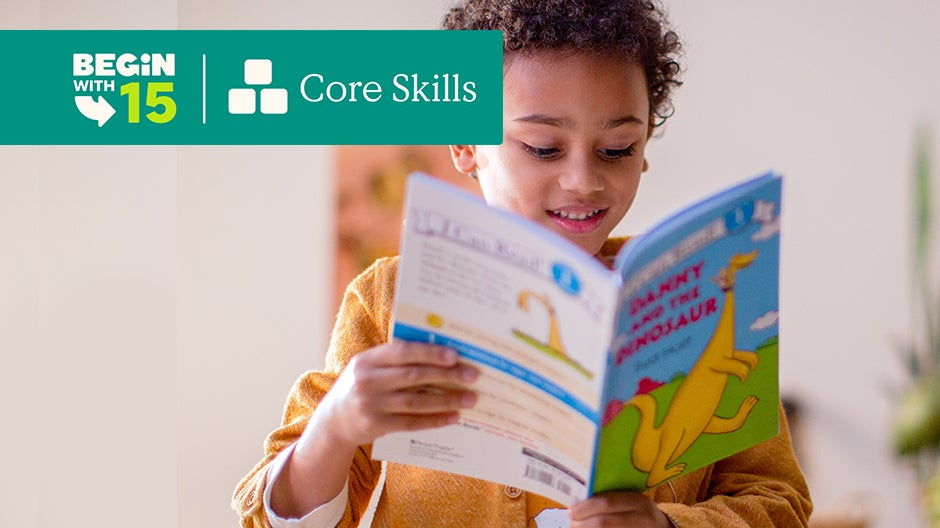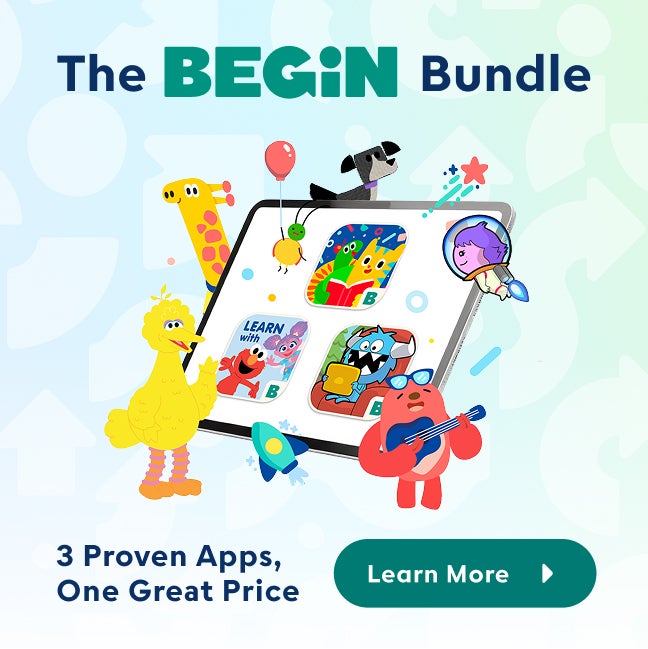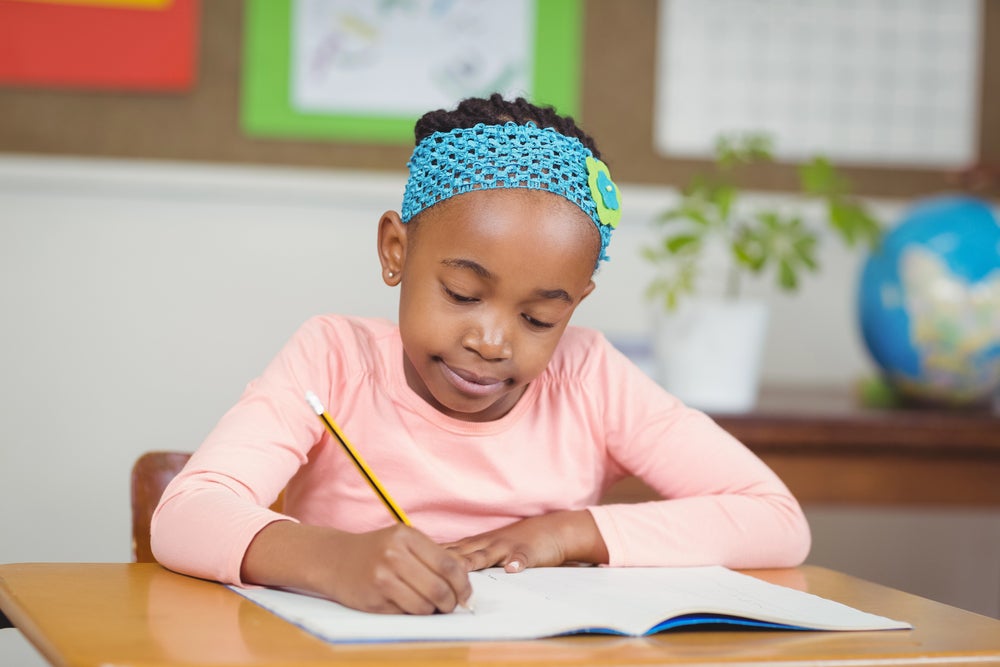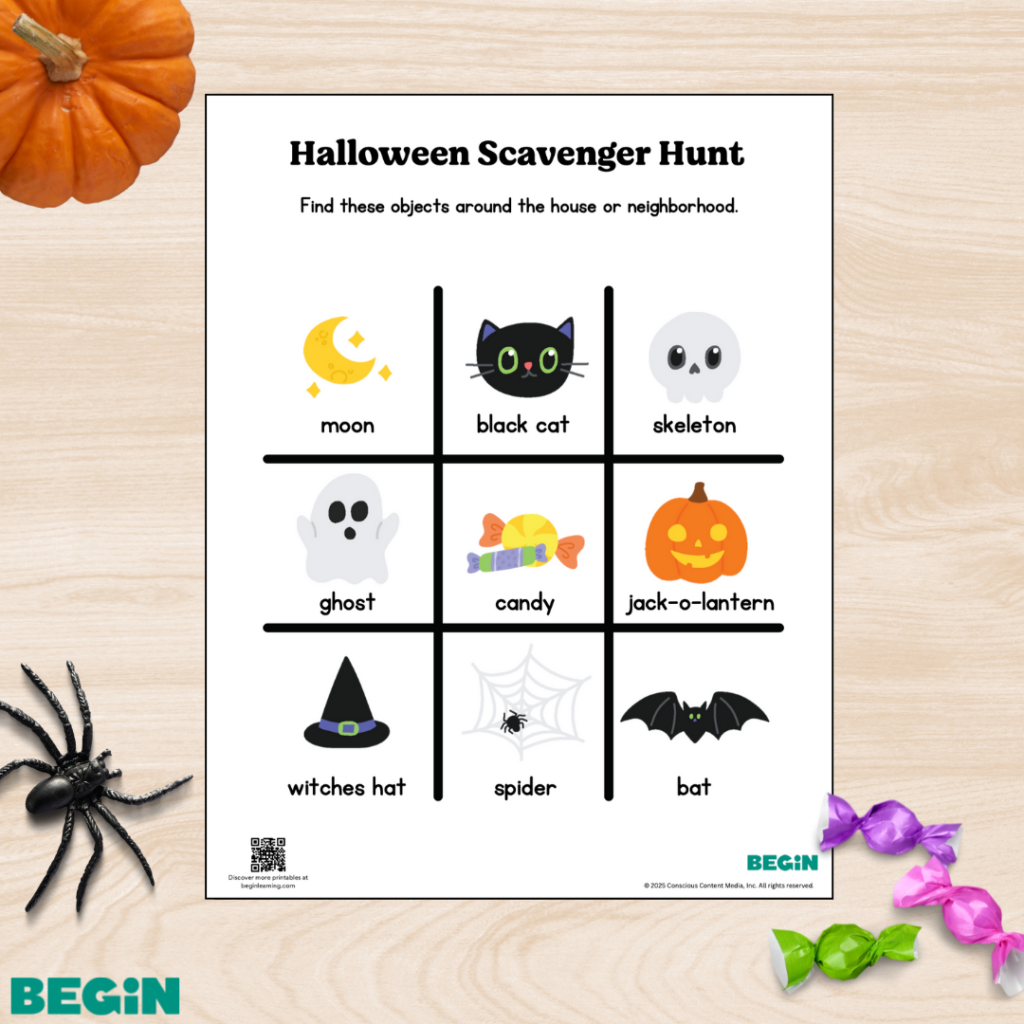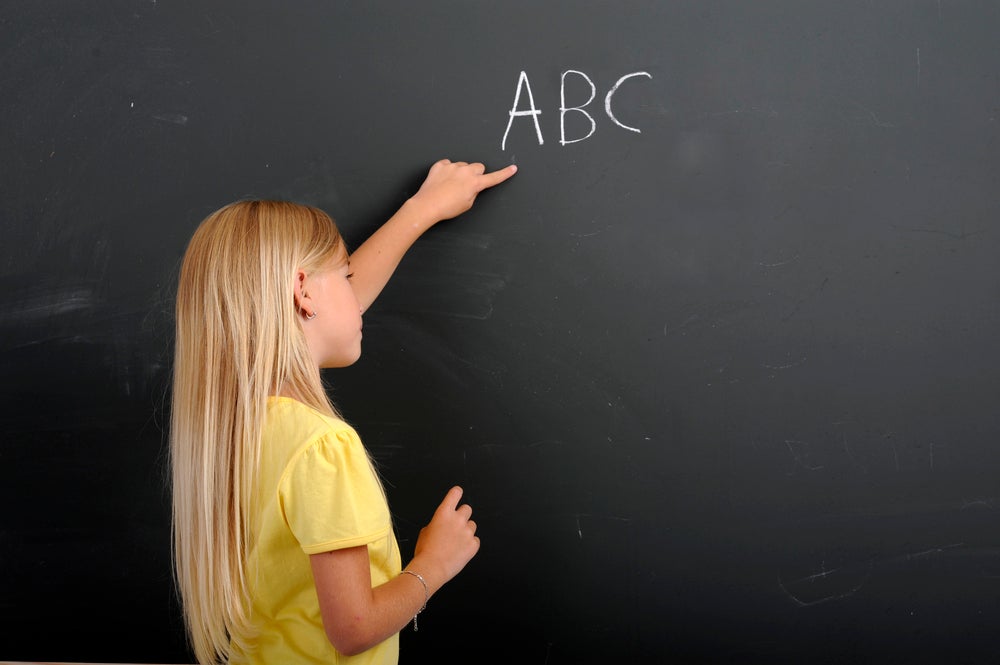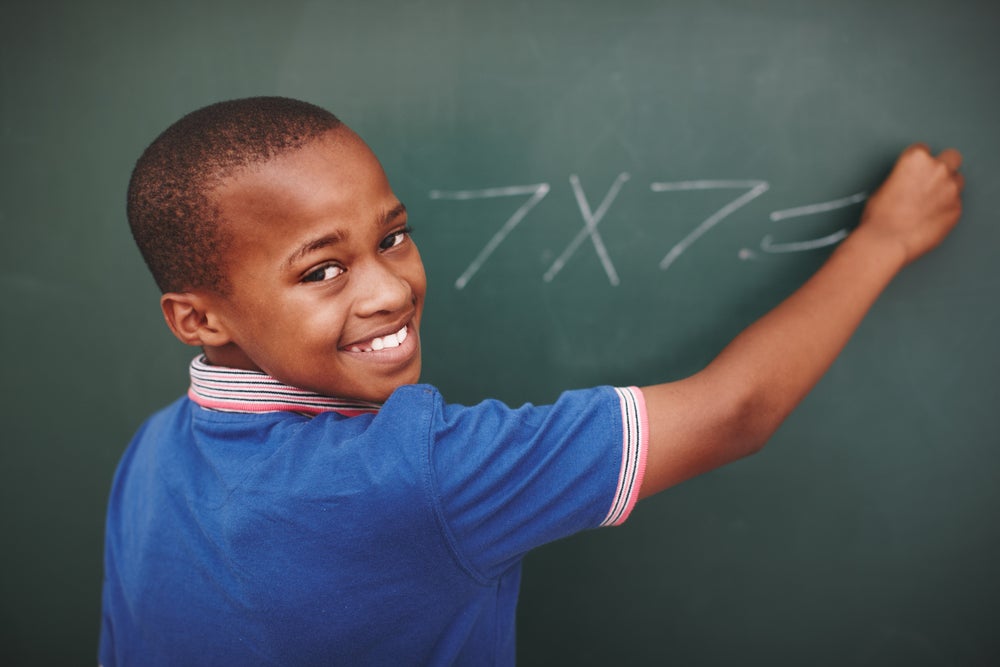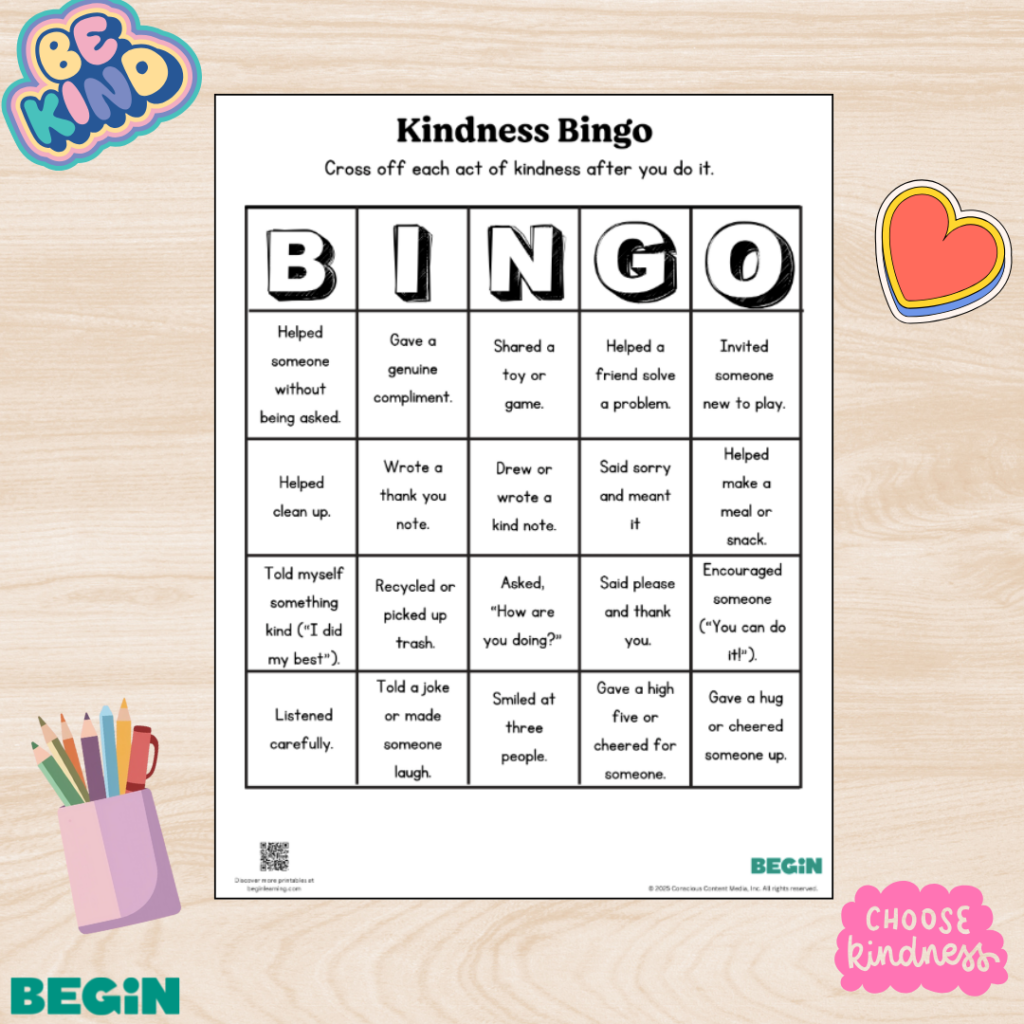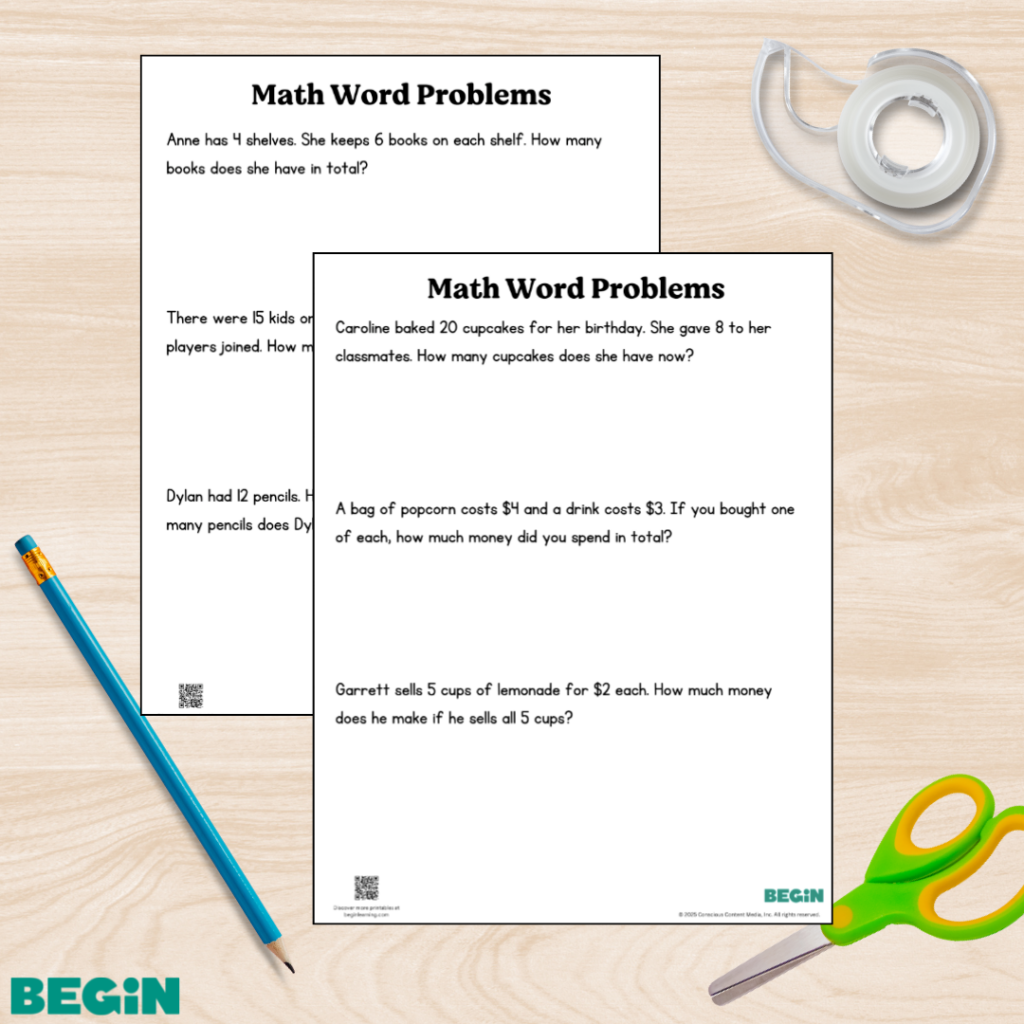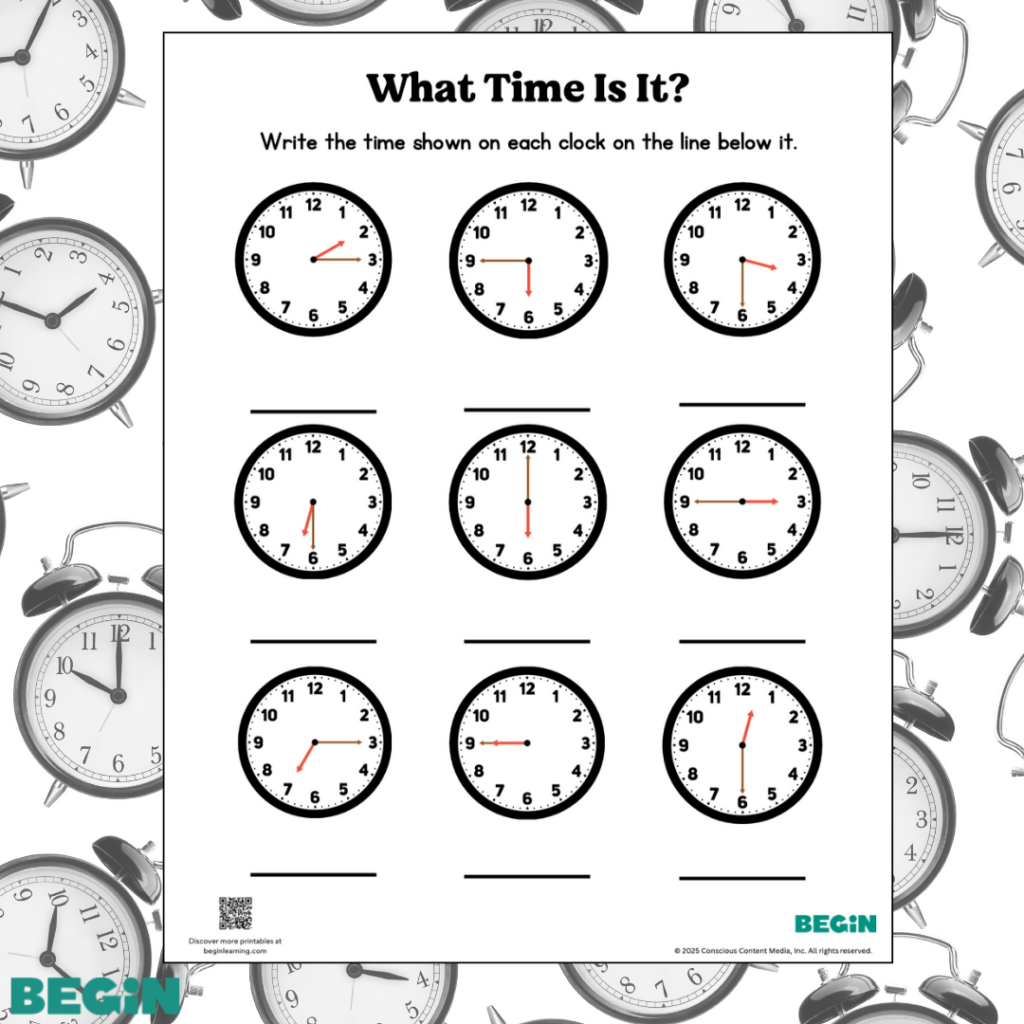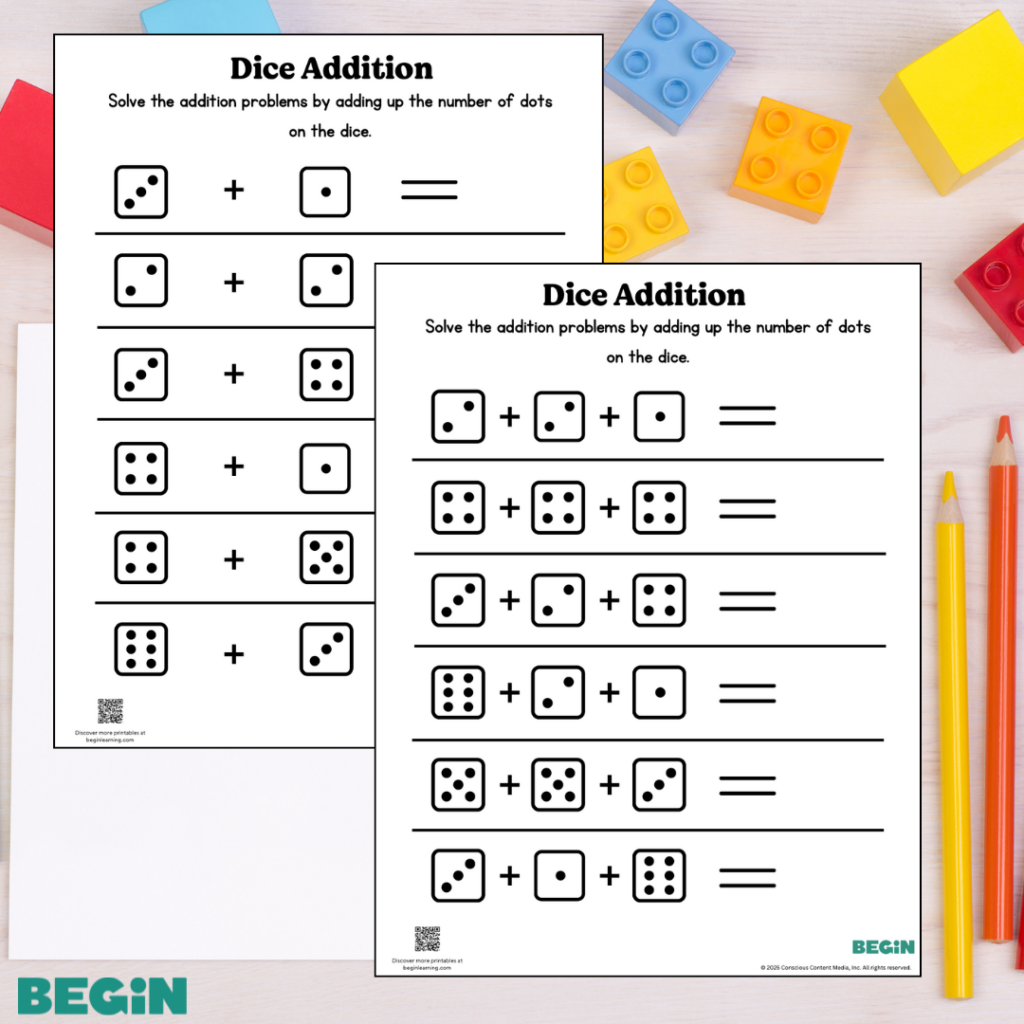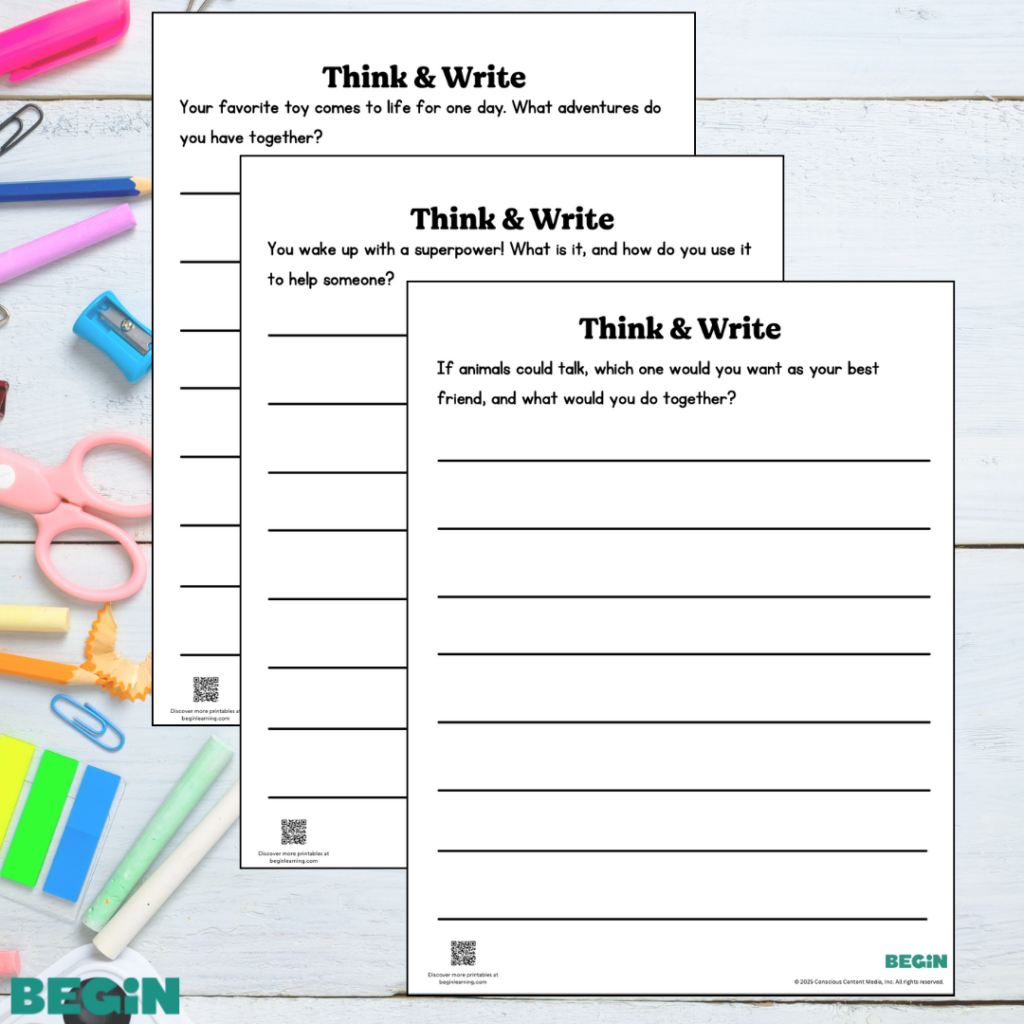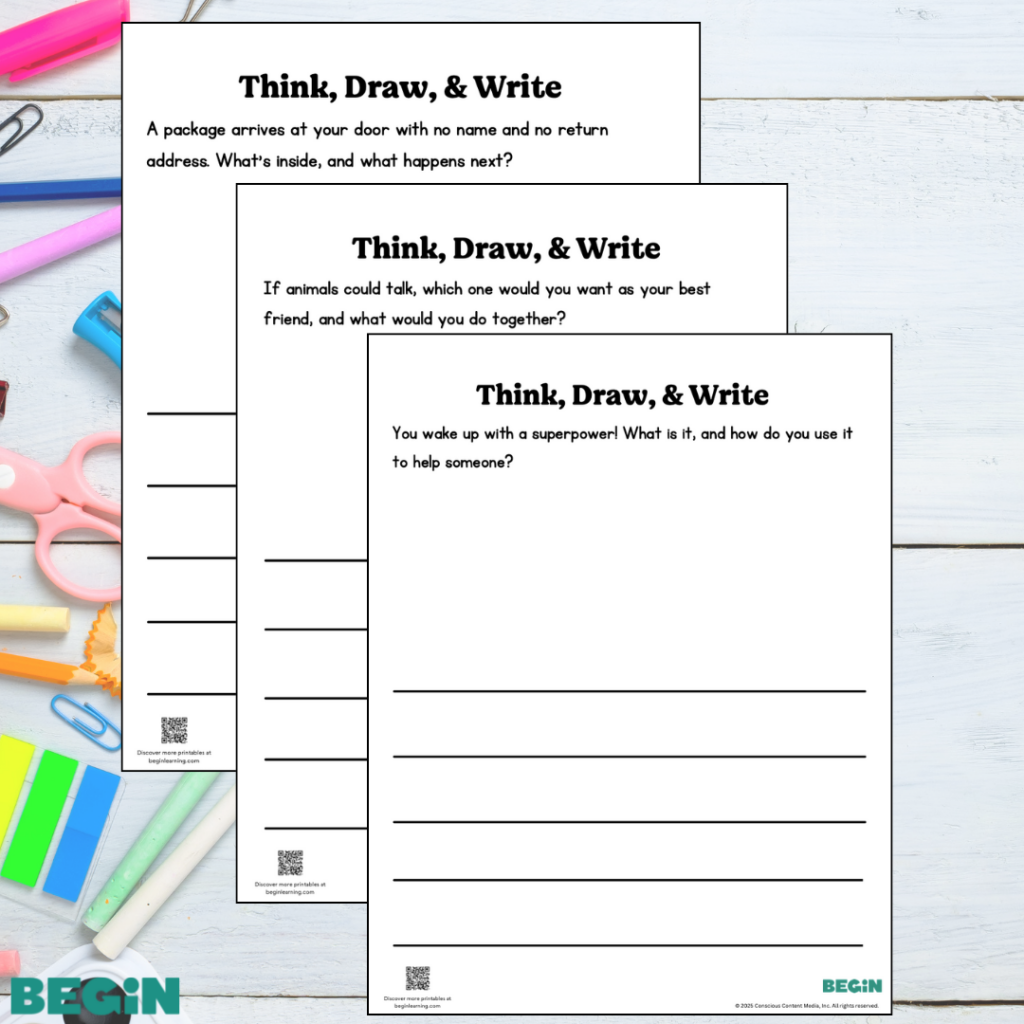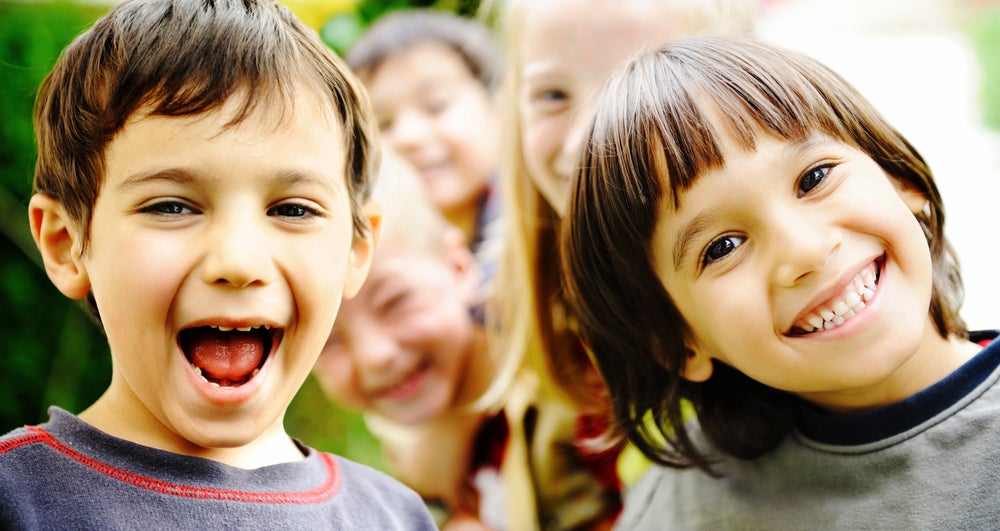Whether you have a newborn or a story-loving toddler at home, it’s a question that’s likely crossed your mind: When do kids learn to read?
The answer is that it doesn’t happen all at once. Long before kids become fluent readers, they start building pre-reading skills like how to interact with books and break words into sounds. Kids are incredible learners, but the work still takes years!
So we’re here to help you encourage them with tools to help them learn to read in fun, uplifting ways.
The Short Cut
- Kids can start developing very early pre-reading skills, like how to hold a book, before age 1, and most become fluent readers around age 6 to age 7
- Reading is an early learning Core Skill, one of the 6 C’s at the heart of the Begin Approach to helping kids thrive in school and life
- Before kids learn to read, they learn how to interact with books, how to recognize printed words, how to break words into sounds, how to recognize the letters in the alphabet, and how to link letters to sounds
- Making reading a fun, lighthearted part of your family’s daily routine is the best way to help your kids develop early reading skills
- Developing the 6 C’s doesn’t need to be complicated. You can make a big difference in only 15 minutes a day!
Cracking the Reading Code
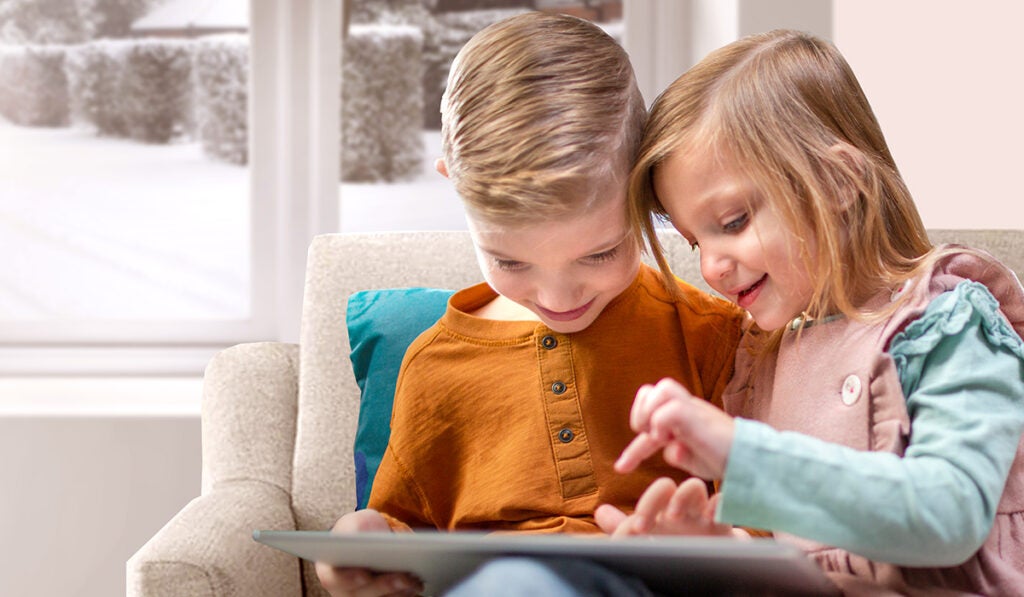
Reading is one of the most important Core Skills, one of the 6 C’s at the heart of the Begin Approach to helping kids thrive in school and life. Young learners with well-developed Core Skills tend to have greater academic success down the road. So it’s no surprise parents pay so much attention to early reading!
Most children learn to speak—either verbally or in sign—through exposure. This happens naturally and without direct instruction. But the more you speak with your child the more you impact their receptive and expressive language which, in turn, can impact their reading.
Unlike speaking, children can’t pick up reading through natural language processes. Instead, we have to teach them how to “crack the code” of written language.
First, children must understand that words are made up of individual sounds (or phonemes) and that each sound is matched to a letter. To crack the reading code, a child must learn to hear sounds in words and to pair them with letters, eventually blending the sounds together to read.
As you might have guessed, learning to read takes time. So, to give you a clearer picture of the overall learning process, here’s a brief look at the pre-reading skills your child will develop (in no particular order) throughout their literacy journey.
Pre-Reading Skills
Phonological Awareness
Phonological awareness is an understanding of sounds in our language and how they relate to each other. This includes segmenting sounds and syllables in words, rhyming, and blending syllables and sounds together to form words.
Alphabet Knowledge
As the name suggests, alphabet knowledge is the ability to both recognize and name the letters of the alphabet.
Print Awareness
Print awareness is a broad term that includes familiarity with different forms of text (books, menus, newspapers, magazines, street signs, etc.), understanding print structure, and knowing how to hold these sources of information correctly.
Without print awareness, it’s hard to connect text in a meaningful way and understand the words and phrases on a page.
Phonemic Awareness
Phonemic awareness is the ability to identify and manipulate sounds in a written word.
This skill is often mistaken for phonological awareness, but it is actually a subset of phonological awareness. Phonemic awareness focuses on identifying and manipulating individual sounds, known as phonemes.
While it might take your child a while to master each of the skills above, they are the building blocks of the reading (and writing) journey. With practice and patience, your young learner will be grabbing their favorite book and reading it all by themselves before you know it.
When that will happen depends on several factors and varies from child to child. Let’s take a closer look!
When Do Kids Learn to Read?
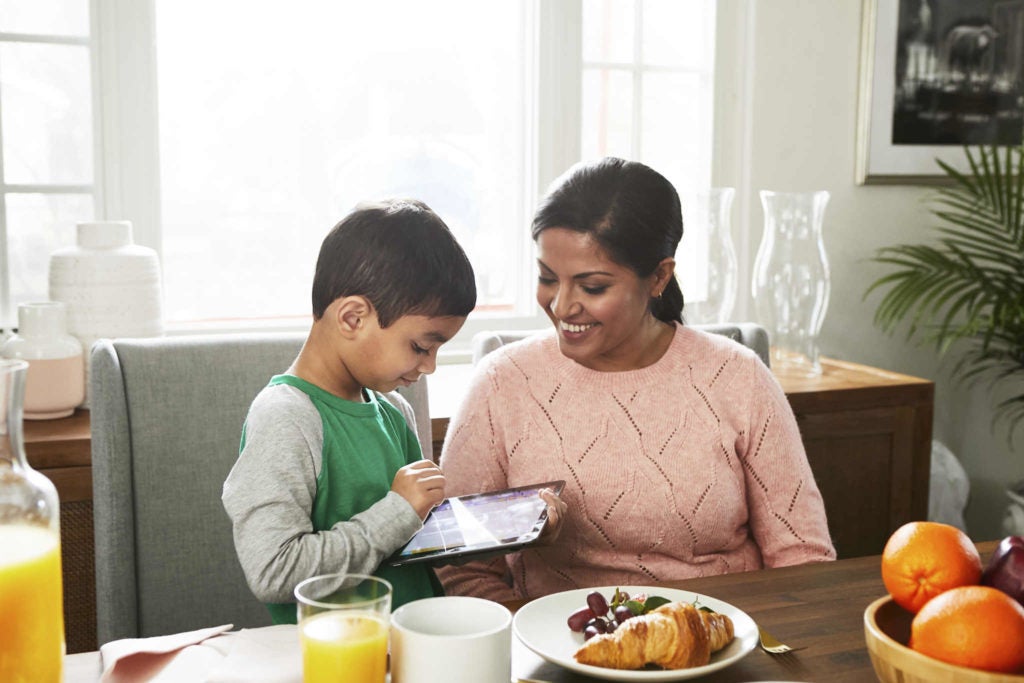
When it comes to reading, all kids are different. When your child learns to read and when another child their age learns to read may be a year (or more) apart. That’s OK! Every kid’s path is uniquely their own.
When your child learns to read may also depend on their pre-reading engagement—in other words, how often they’re exposed to reading.
For example, kids who are read to, who have parents modeling a love of reading, and who have books as part of their everyday life tend to be more excited to learn to read. These children also develop essential pre-literacy skills, such as print awareness.
Another thing to keep in mind is that your child’s reading development is directly impacted by how much they read, especially independently.
Rather than worrying about a precise timeline, it’s better to keep in mind a generalized idea of what milestones your child can reach at different ages.
Let’s take a look at those milestones (or benchmarks) below.
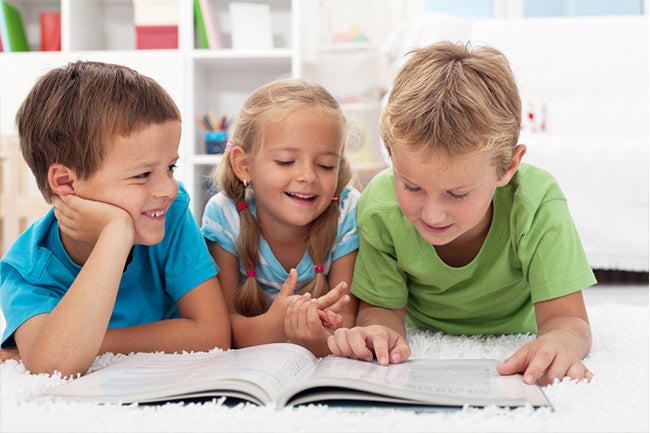
Reading Benchmarks by Age
Babies (Under 1 Year Old)
Babies may begin playing with and exploring board books or soft books (often by chewing on them!).
Books with lots of colorful illustrations and dynamic storytelling will help engage your baby and foster a love of reading right from the start.
Although your baby can’t talk yet, keep an ear out for any noises they make in response to your reading. Cooing and other noises can help signify that your baby is paying attention, having fun, and bonding with you while learning.
Toddlers (1 to 2 Years Old)
As they grow older, your baby’s cooing might evolve into some very enthusiastic baby babble. They may giggle and chatter in their own unique baby language in response to your story narrations.
By 18 months, most children move on from babbling to using words. Their vocabulary increases every day! You can take advantage of this vocabulary explosion when you share books that have pictures of things they love.
To encourage them, you can point to illustrations or pictures and ask, “What’s that?”
Getting them physically involved helps, too. If you would like to try this, start by holding their hand in yours as they turn the page. This will help develop their motor skills and mimic what real reading feels like.
You can also run your finger along the print, showing that the words are important and that you follow them from left to right. This helps develop print awareness.
Preschool-Aged (3 to 4 Years Old)
Now is when the initial groundwork you laid when your child was a baby begins to pay off! Keep in mind, though, that there is a large difference in what a beginning 3-year-old and a late 4-year-old can do.
As your child moves through preschool education, they’re introduced to more fundamentals about books and reading. A 3-year-old may start to understand how to identify different parts of a book—the spine, title, cover, and author.
They may also be able to tell you what the story was about in basic terms (a shark who loves cupcakes, a puppy who can ride a bike, and so on).
Three- and 4-year-olds are beginning to develop ideas about the alphabet and to attribute sounds to letters. They are also ready to engage in listening games that will promote their ability to use phonics as beginning readers.
You can boost their phonics confidence by singing lullabies or nursery rhymes with them. Enrich the experience by clapping!
Learning to sing the alphabet also usually happens by the end of the preschool years. This is a great time to encourage your child to explore recognizing at least half of the alphabetic letters and having a go at writing their own name.
Kindergarteners (5 to 6 Years Old)
Formal introduction to sounding out or decoding words begins at this age. As part of this work, your child will benefit from learning to hear individual phonemes (single letter sounds) in words—a foundational skill for sounding out words.
Beginning to learn sight words is also important at this age, as sight words don’t always follow regular phonemic patterns (they don’t sound the way they’re spelled).
For ideas on how to incorporate sight word learning into your routine, check out our article 13 Highly Effective and Fun Sight Word Games to Help Your Kids Learn.
To help build your kindergartener’s reading confidence, prompt them to summarize what happened in the story while you read with them. To make it fun, you can play the silly, forgetful parent!
Asking simple questions about the story helps get your child’s brain working and lets you know if they understood the book.
Young Elementary (6 to 7 Years Old)
At this age, children learn more advanced phonics, such as:
- Silent “e”
- Vowel teams like ai and oa
- Vowels controlled by R to make er, ir, ur, ar, or
Your child may begin receiving weekly vocabulary word banks to learn. They will also be exposed to common spelling rules and patterns.
Additionally, when you see your child re-reading their favorite books, know that they’re building strong fluency. This helps them engage more deeply with the texts and investigate words that might be unfamiliar.
To foster a love of reading in your child at this age, you can help them draw conclusions and parallels between things in their life and the things they read.
After all, reading is about making new connections to familiar facts that your child knows and loves, as well as exploring unfamiliar ideas!
Older Elementary (8 to 10 Years Old )
During these years, your child is likely moving away from learning to read—instead, they’re reading to learn.
They may choose to read independently more often. They may read for pleasure or to explore their own interests, as well as answer questions about the text and look for real-world examples.
That being said, even after children are independent readers, it’s a good idea to continue to read aloud together. This is an opportunity to share books that are more difficult for them to read on their own.
It can also be good for you to read books that your child reads either on their own or for school and talk about them together, like a book club! This can be a fun way to connect with your child and spend more time together.
When Do Kids Learn to Read: FAQs

Why Does My Child Have Trouble Reading?
If your child isn’t the first to read in their class, it doesn’t mean there’s anything wrong with them. They may just need some more time and support to develop their abilities. That’s OK! Every child learns at their own pace.
Learning to read is quite a lengthy process and involves a multitude of skills, and some kids may find it more challenging than others. There are various reasons for this.
Some children might struggle with the type of reading instruction used in class. Others may find it difficult to understand how language works (e.g., matching sounds to letters or recognizing the sounds in words).
No matter what the reason is, there are things you can do to help.
Supporting children in their early years is essential to the Begin team. That’s why our HOMER app focuses on multiple key developmental areas, including early childhood reading.
Our experts developed it to provide a personalized pathway that builds essential skills—from letters and sounds to sight words and, eventually, reading and spelling. Just 15 minutes a day of HOMER can raise early reading scores by 74%!
Why Is My Youngest Child Not Reading When My Oldest Did?
When it comes to children’s literacy journeys, the last thing you want to do is compare your own children to each other, their friends, cousins, or peers in school. As you already know, kids are very different, so they will hit milestones at different times.
If your oldest started reading at four or five years old, that’s great, but don’t expect your youngest to do the same.
Also, keep in mind that while some kids might start earlier, according to the U.S Department of Education, children generally begin reading at around six or seven years of age (first or second grade).
Who Can I Reach Out to If I Think Something’s Wrong?
Even though it’s normal for children to learn to read at different ages, sometimes medical concerns make kids take longer than usual. Or, in some cases, children have trouble reading because they have a learning difference and might need special instruction before they can learn to read fluently.
If you suspect this might be the case with your child, talk to your child’s teacher or ask to meet with their school’s learning specialist. They will know if the issue is developmental or if there are underlying problems you’ll want to address.
You can also reach out to a reading specialist outside of your child’s school who may be able to assess your child first and help you determine if there are additional things to address.
Learning to Read with Begin
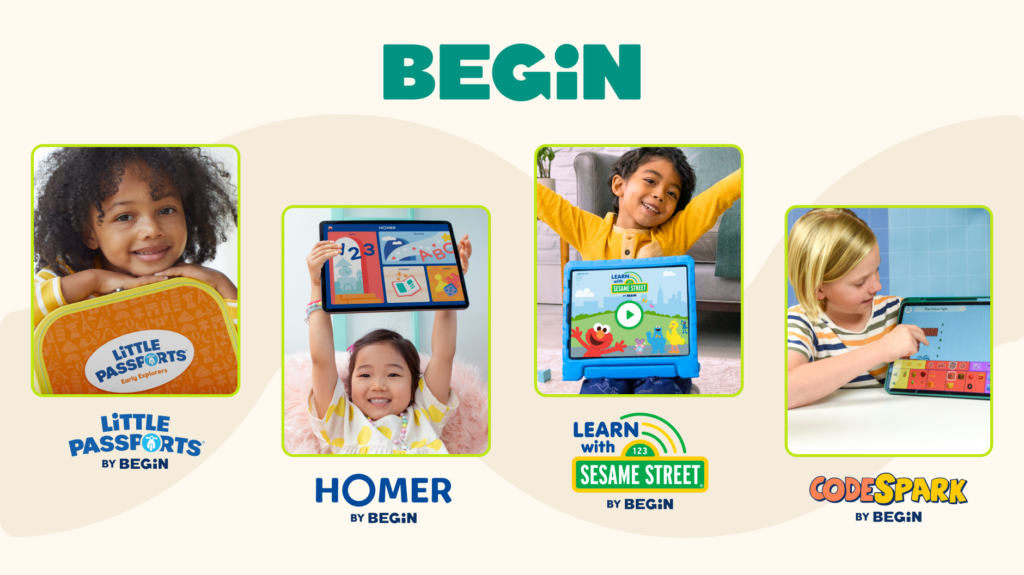
No matter when your child learns to read, don’t worry! With a little love and support from you, they will get there in their own time. If you’re ever concerned, feel free to reach out to your child’s teacher or another professional.
Begin can help you too.
Try our HOMER app—just 15 minutes a day has been proven to raise early reading scores by 74%!
